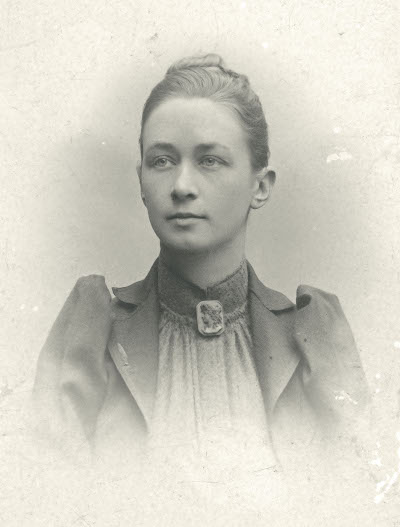Hilma af Klint was a Swedish abstract artist from the early 20th century. Her innovative paintings were inspired by her strong interest in Mysticism and her work predated many other great modern artists.
The artist’s legacy was stunted for many years after her death, in part by her own choosing, but also due to the unfair treatment given to her work once it had been unveiled.
It has only been in more recent decades that the true impact and quality of her work has been truly understood, with far greater efforts now being made to publicize her unique story. It appears likely that her legacy will continue to grow in future generations, and she now enjoys a permanent room dedicated to her achievements in the Moderna Museet in Stockholm.
Early Life
The artist was born on the 26th of October, 1862 to Mathilda af Klint and Captain Victor af Klint. She would spend her childhood summers at their alternative property on the island of Adelsö and it was here that she would become inspired by the beauty of nature. She would return in later life to the region, and so never lost touch with its stunning features.
The family chose to move to Stockholm in search of opportunities and this enabled Hilma to start her artistic education, having shown some early promise. She was accepted into the Royal Academy of Fine Arts and would receive a broad training in art whilst here, including many aspects of drawing and painting.
Artistic Career
By her mid-twenties Hilma af Klint was able to work independently and found a market for her naturalistic paintings. Whilst holding a strong passion for botany, the artist was not satisfied with the success that she achieved with her scenes of nature and wanted to connect her work to the new spiritual side of her character.
This would be where her abstract style first started to appear, but she was entirely aware of the difficulties that she would have in profiting from it financially. Today, by contrast, these groundbreaking works are the most famous contributions of her career, and what marks her out as a particularly significant European painter.
Hilma found a number of female artists who shared her interest in abstraction, and they would later become known as The Five. The women would hold regular seances, as well as meditating together and reflecting on passages from the Bible. In fact, their discussion of theory and mysticism held a greater significance to them than discussing artistic technical matters, which they felt were merely the vehicle to visually displaying their inner thoughts. They had met at the Academy in the 1880s and started to work in an experimental capacity in the following decade.
Hilma’s first published pieces in this new abstract form would arrive just after the turn of the century, and from that point onwards she would continue to evolve this new approach until the end of her career. Despite the minimalist nature of many of these paintings, theory will lay behind them, with Hilma attempting to simplify complex thoughts into simple arrangements of shapes and color, just as with a number of other significant artists from that period such as Wassily Kandinsky, Piet Mondrian and Kazimir Malevich.
Her Temple series, from 1906 and 1915, comprised 193 paintings and delved deeply into the spiritual world, whilst working within an abstract environment. Colors would be carefully chosen and symbolic of different types of spirit. Her arrangements of shape would be simple, often arranging circles, arrows and triangles in a manner which was entirely fresh for the period. Some have suggested that Kandinsky himself was inspired after seeing photographs of this series, but little evidence has been found to support this claim.
Throughout her artistic career, alongside her oil paintings and occasional watercolors, the artist would also scribble notes and sketches into various notebooks, which culminated in a considerable insight into the mind of this deep thinking painter, also helping to explain some of her more abstract creations which often made use of symbolism. Her communications with the other members of The Five also revealed much about their collective thinking, as they shared many views on the physical and spiritual world.
Style
Whilst completing a large number of Naturalist artworks earlier in her career, Hilma af Klint’s career will always be synonymous with the abstract language that she developed around the turn of the century. She was able to combine geometry, science, religion and mysticism as inspiration for her work, at a time when a number of European artists were seeking to take art way below just its aesthetic value. Her shapes and patterns would be carefully chosen to represent themes such as growth and evolution whilst colors would be used to represent different spirits.
Legacy
Hilma af Klint died on the 21th of October, 1944 in Danderyd, which lies just north of Stockholm. She was eighty one years of age at the time of her passing and had already arranged for her paintings to be gifted to members of her family. She believed her abstract paintings to be too revolutionary for the tastes of the 1940s, and so requested that her work remain wrapped and hidden from public view until the 1960s.
Eventually her collection was organized by the Hilma af Klint Foundation which was better suited to managing her oeuvre, and in recent years a number of major art galleries and museums within Scandinavia and further afield have helped to better expose her legacy to the general public. Indeed, some followers of abstract art history were astounded to discover her work having been entirely unaware of her contributions up until now.




